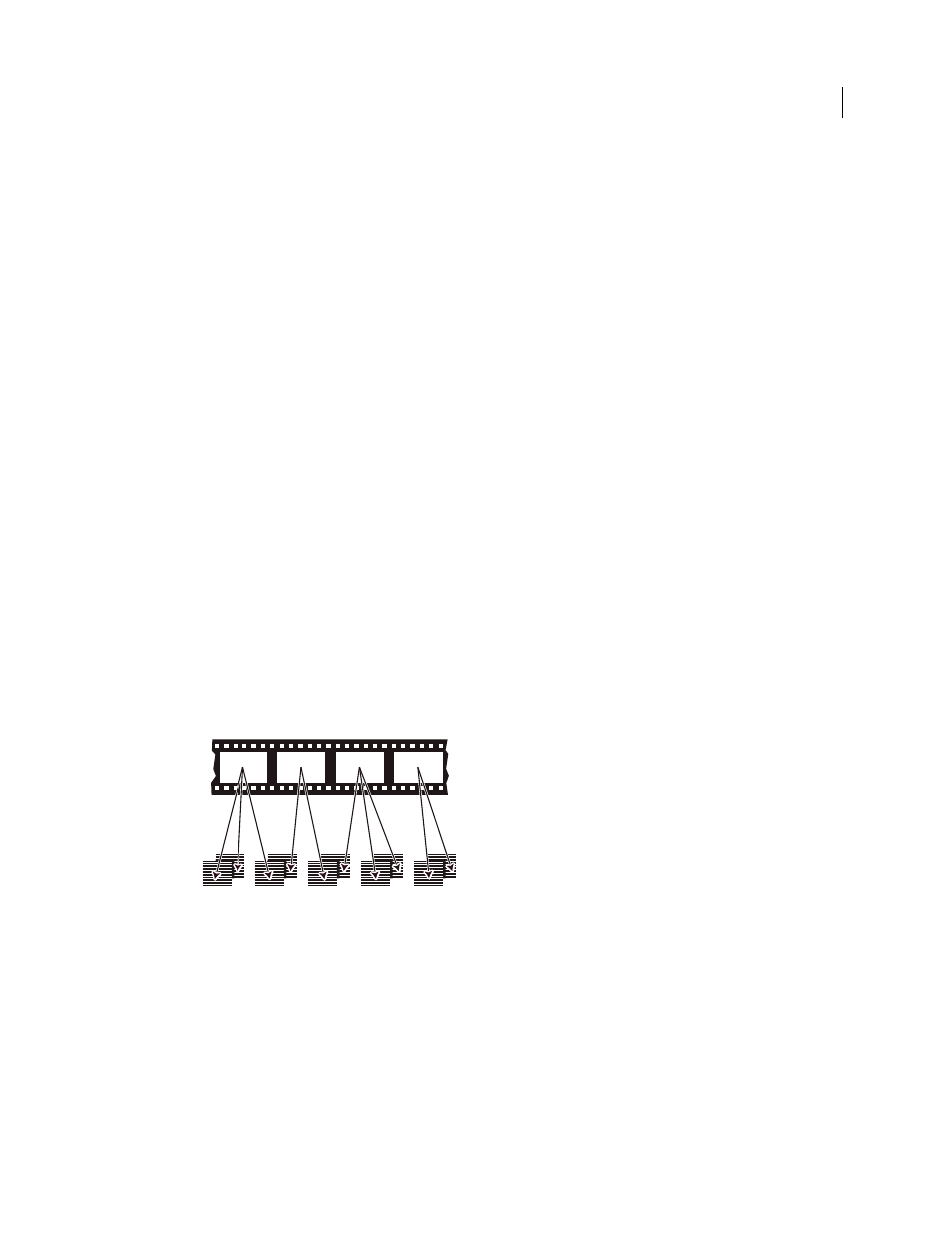About 3:2 and 24pa pulldown – Adobe Premiere Pro CS4 User Manual
Page 148

142
USING ADOBE PREMIERE PRO CS4
Editing sequences and clips
Last updated 11/6/2011
If you edit 24p footage in a sequence based on one of the DV-24p presets, Premiere Pro, by default, manages the 24p
pulldown scheme, so that the video can be exported for playback on 24p NTSC devices. This allows you to export the
movie to a file in a 24p format. You would use this method, for example, to export your movie to a DVD for playback
on DVD players and TV monitors that support 24p formats.
When you are done editing, you can use the Adobe Media Encoder to export the 24p movie from Premiere Pro to
Adobe Encore. You can open it in Encore, author your DVD, then master and burn the project as a 24p MPEG-2
stream. The resulting DVD exhibits no interlacing artifacts on 480p-capable (progressive-scan-capable) DVD players
and televisions. Alternatively, you can export the Premiere Pro 24p project into a format, such as still-image sequences,
appropriate for transfer to film.
Note: Premiere Pro accepts 24p and 24pA footage only from cameras using these schemes.
About 3:2 and 24pA pulldown
When you transfer 24-fps film to 29.97-fps video, you use a process called 3:2 pulldown, in which the film frames are
distributed across video fields in a repeating 3:2 pattern. The first frame of film is copied to fields 1 and 2 of the first
frame of video, and also to field 1 of the second video frame. The second frame of film is then spread across the next
two fields of video—field 2 of the second video frame and field 1 of the third frame of video. This 3:2 pattern is repeated
until four frames of film are spread over five frames of video, and then the pattern is repeated.
The 3:2 pulldown process results in whole frames (represented by a W) and split-field frames (represented by an S). The
three whole video frames contain two fields from the same film frame. The remaining two split-field frames contain a
video frame from two different film frames. The two split-field frames are always adjacent to each other.
The phase of 3:2 pulldown refers to the point at which the two split-field frames fall within the first five frames of the
footage. Phase occurs as a result of two conversions that happen during 3:2 pulldown: 24-fps film is redistributed
through 30-fps video, so each of four frames of 24-fps film is spread out over five frames of 30 (29.97)-fps video. First,
the film is slowed down 0.1% to match the speed difference between 29.97 fps and 30 fps. Next, each film frame is
repeated in a special pattern and mated to fields of video.
When you apply 3:2 pulldown to footage, one frame of the film (A) is separated into two or three interlaced video fields (B) which are grouped
into video frames containing two fields each.
It’s important to remove 3:2 pulldown from video footage that was originally film, so that effects you add synchronize
perfectly with the original frame rate of film. Removing 3:2 pulldown reduces the frame rate by 1/5: from 30 to 24 fps
or from 29.97 to 23.976 fps. Reducing the frame rate also reduces the number of frames you have to change.
Premiere Pro also supports Panasonic DVX100 24p DV camera pulldown, called 24p Advance (24pA). This format is
used by some cameras to capture 23.976 progressive-scan imagery using standard DV tapes.
For more information about 24p pulldown schemes, see the video tutorial, Digital Video Principals: Converting 24 fps
video, on the
2
3
2
3
A
B
W
S
S
W
W
